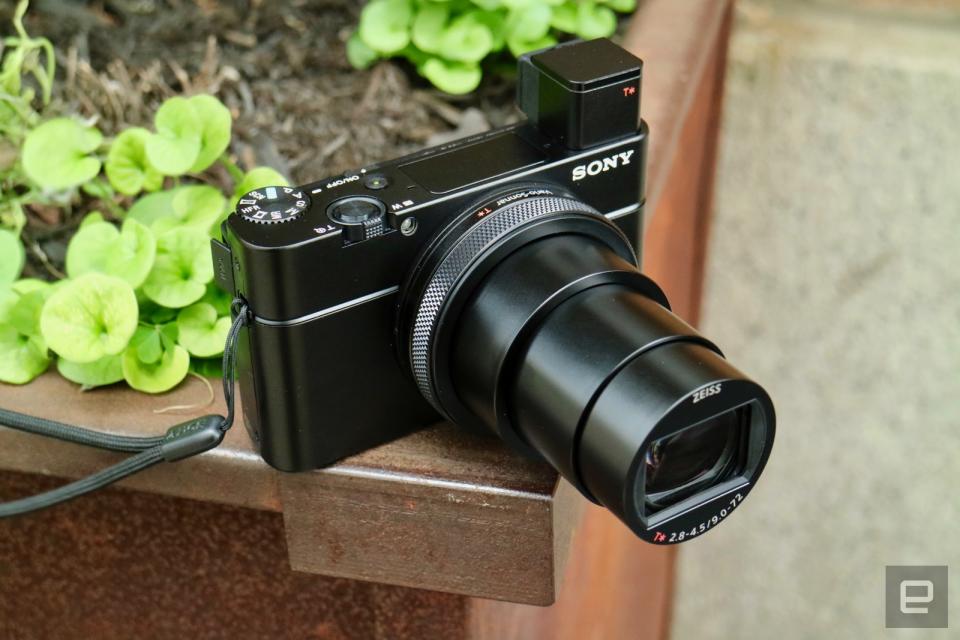A day with Sony’s versatile RX100 VI point-and-shoot
The 24–200mm lens isn't perfect, but it'll come in handy when you need it.
Without a doubt the most interesting feature on Sony's new flagship point-and-shoot RX100 VI is the new zoom lens. That Vario-Sonnar T* 24–200mm f/2.8–4.5 glass is much longer than the 24–70mm equivalent on the previous model, making the RX100 VI a more versatile compact shooter. You may not always need the superzoom, but it's nice to know you have that option -- especially on a camera that fits in the pocket of your shirt or jeans. Aside from the upgraded lens, the RX100 VI looks identical to its predecessor and also comes with a 20.1-megapixel, 1-inch Exmor RS CMOS sensor, though it does feature a better Bionz X processor (the same one that's on the full-frame A9).
The ISO is still capped at 12,800, but you'll get improved optical image stabilization to handle the longer 24–200mm lens. Like the RX100 V, Sony's RX100 VI is all about speed: You can capture RAW photos at a ridiculous 24 frames per second, and the autofocus clocks in at 0.03 seconds, which the company claims is the world's fastest. And if you want to shoot some videos, you can do so in 4K (with HDR) or slow motion at 250, 500 or 1,000 frames per second. In general, the RX100 series has set the gold standard for point-and-shoot specs since its introduction in 2012, and the newest member just continues that.
I took it out for a spin and, for the most part, was impressed by the RX100 VI's performance. My goal was to focus on long-range shots and put that new 24≠200mm lens through its paces, since that's the camera's most notable update. It's definitely nice to be able to focus on subjects that are far from you, like a construction crane on the top of a New York City skyscraper, but many of the images I took came out looking soft. That type of compromise on the optics is to be expected when you're zoomed in at close to 200mm, and it didn't help that it was a cloudy day -- a wider-aperture lens would've made things better, for sure.
Indoors is a completely different story, though, especially when you have access to professional studio lighting. The camera produced some great shots of both moving and still subjects from long range. And anytime I kept the lens between 24 and 70mm (inside or outside), I knew I didn't have to worry about any pictures being fuzzy. Whether I was taking a close-up shot of a violinist or a break dancer, the RX100 VI focused quickly and the results were sharp, vibrant images -- as you've come to expect from Sony's top-of-the-line mirrorless cameras. You can now also touch the screen to focus, which makes it easier to lock in on your subjects. That said, I still prefer using the OLED electronic viewfinder, particularly now that it pops out of the body with the touch of a button.
But as impressive as the RX100 VI is, it's not perfect. Sony keeps pitching it as the ideal camera for vloggers (aka YouTubers), but it lacks a 3.5mm audio jack, and the lens just isn't wide enough. The camera also takes too long writing files after using the continuous shooting mode or capturing slow-motion videos, even with the latest high-speed SD card.
Yes, I appreciate the new zoom lens, but I wish Sony had addressed some of these other (known) issues, too. The biggest drawback for many photo and video enthusiasts, however, is probably going to be the $1,200 price tag. It's a lot for a compact camera, and if you're going to invest that much, why not spend a little extra and get an A6500 ($1,100) or an A7 III ($2,000), both of which offer interchangeable lenses and bigger sensors. They may not fit in your pocket, but you'll experience Sony's true versatility.
To view our sample images in full resolution, click here.




































